 by our College Data Analytics Team
by our College Data Analytics TeamAIU Online total enrollment is approximately 15,415 students. 11,471 are undergraduates and 2,136 are graduate students.
Male/Female Breakdown of Undergraduates
The full-time AIU Online undergraduate population is made up of 63% women, and 37% men.
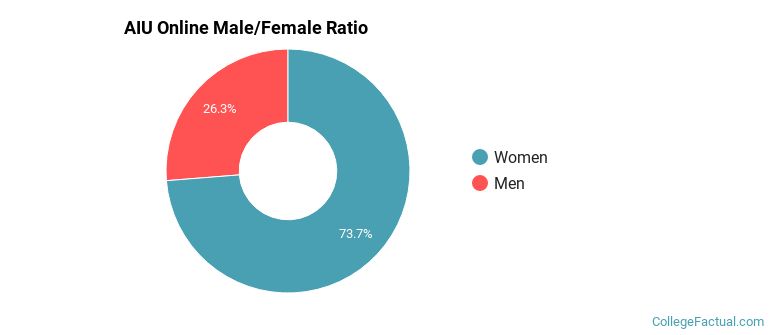
For the gender breakdown for all students, go here.
AIU Online Racial/Ethnic Breakdown of Undergraduates
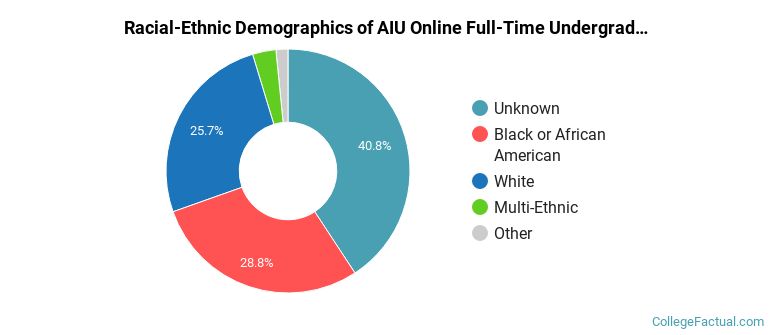
| Race/Ethnicity | Number |
|---|---|
| Unknown | 3,793 |
| Black or African American | 3,321 |
| White | 3,053 |
| Hispanic | 548 |
| Multi-Ethnic | 404 |
| Asian | 143 |
| Native Hawaiian or Pacific Islander | 108 |
| International | 0 |
See racial/ethnic breakdown for all students.
Male/Female Breakdown of Graduate Students
About 46% of full-time grad students are women, and 54% men.
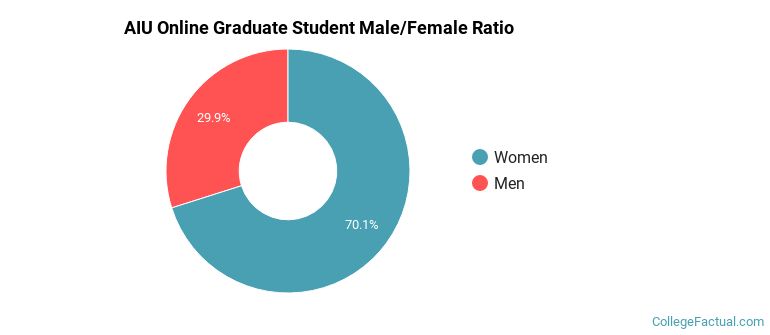
For the gender breakdown for all students, go here.
AIU Online Racial-Ethnic Breakdown of Graduate Students

| Race/Ethnicity | Number |
|---|---|
| Black or African American | 808 |
| White | 622 |
| Hispanic | 260 |
| Unknown | 209 |
| Multi-Ethnic | 98 |
| Asian | 84 |
| Native Hawaiian or Pacific Islander | 35 |
| International | 0 |
See racial/ethnic breakdown for all students.
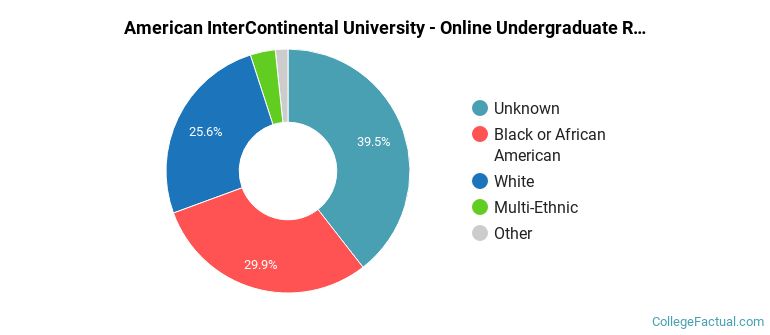
| Race/Ethnicity | Number |
|---|---|
| Black or African American | 4,740 |
| Unknown | 4,660 |
| White | 4,114 |
| Hispanic | 814 |
| Multi-Ethnic | 564 |
| Asian | 235 |
| Native Hawaiian or Pacific Islander | 152 |
| International | 0 |
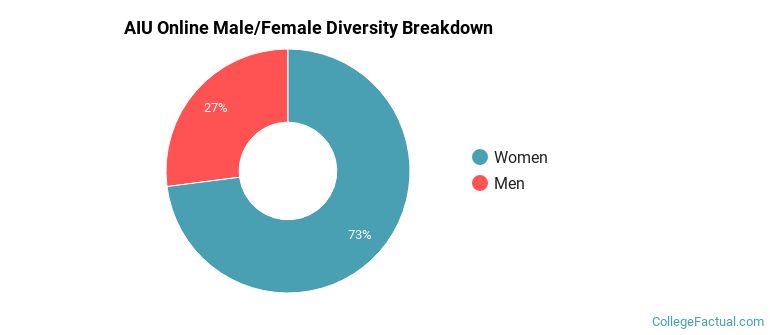
There are approximately 9,453 female students and 5,962 male students at AIU Online.
AIU Online ranks 19 out of 2,183 when it comes to geographic diversity.
96.15% of AIU Online students come from out of state, and 0.4% come from out of the country.

The undergraduate student body is split among 46 states (may include Washington D.C.). Click on the map for more detail.
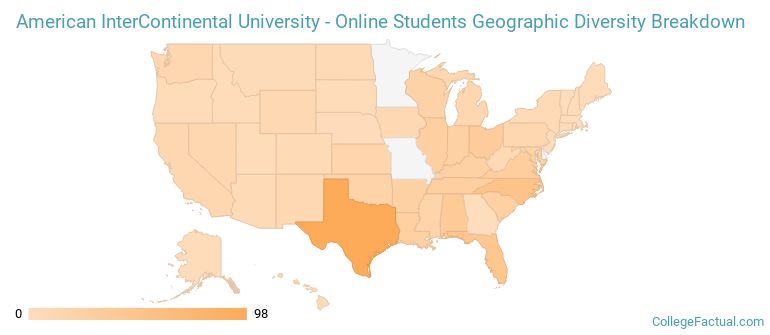
| State | Amount |
|---|---|
| Texas | 98 |
| North Carolina | 50 |
| Florida | 44 |
| Alabama | 38 |
| Ohio | 33 |
A traditional college student is defined as being between the ages of 18-21. At AIU Online, 5.06% of students fall into that category, compared to the national average of 60%.
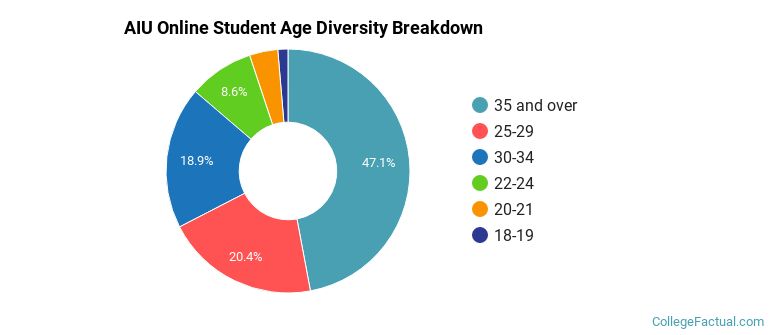
| Student Age Group | Amount |
|---|---|
| 35 and over | 4,527 |
| 25-29 | 1,959 |
| 30-34 | 1,814 |
| 22-24 | 829 |
| 20-21 | 362 |
| 18-19 | 129 |
| Under 18 | 0 |
Footnotes
*The racial-ethnic minorities count is calculated by taking the total number of students and subtracting white students, international students, and students whose race/ethnicity was unknown. This number is then divided by the total number of students at the school to obtain the racial-ethnic minorities percentage.
References
Department of Homeland Security Citizenship and Immigration Services
Read College Factual's Diversity Ranking Methodology.